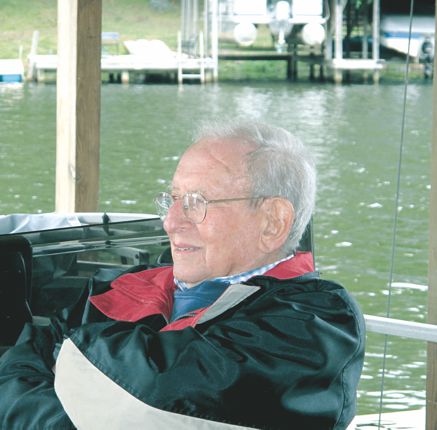Eugen Merzbacher
DOI: 10.1063/PT.3.2222
A noted author, teacher, and former president of the American Physical Society (APS), Eugen Merzbacher died on 6 June 2013 in Chapel Hill, North Carolina, following a fall and brief hospitalization. He was well known for his Quantum Mechanics text and for his early theoretical research in atomic collision physics.

Eugen Merzbacher

Born into a family of scholars and scientists in Berlin on 9 April 1921, Eugen moved to Turkey in 1935 with his family. There he earned his undergraduate degree in physics at Istanbul University and then taught high school chemistry and physics. In 1947 he emigrated to the US to enroll at Harvard University. He finished in three years and wrote his doctoral thesis on beta-decay theory under the direction of Julian Schwinger.
After a brief stay at the Institute for Advanced Study in Princeton, New Jersey, Eugen moved to Duke University in 1951 to provide theoretical support for its new nuclear-physics program. One year later he joined the physics faculty at the University of North Carolina (UNC) at Chapel Hill, an affiliation he retained for the rest of his career. He was named a Kenan Professor of Physics in 1969. He also held numerous visiting positions, among them at the Niels Bohr Institute in Copenhagen in 1959–60 and as a Humboldt senior scientist at the University of Frankfurt in 1977.
Eugen at UNC, Henry Newson at Duke, and Worth Seagondollar at North Carolina State University in 1965 began the cooperative Triangle Universities Nuclear Laboratory program, which still thrives today. At UNC, Eugen led his colleagues in a badly needed revision of the university’s undergraduate curriculum, and he served as chair of the department of physics and astronomy from 1977 to 1982.
Much of his early work with APS was channeled through the Southeastern Section, for which he served as chairman in 1971–72. That led to a distinguished career of service to APS in important national roles. As a senior officer, including as president in 1990, he spearheaded APS’s strategic planning and led in rewriting its constitution to accommodate the rapidly broadening physics interests of its members. He helped reorganize and reorient APS governance, giving management power to the smaller, more nimble executive board, which met frequently, and making the larger APS council the main governing body. He was also instrumental in negotiating and planning the move of APS and the American Institute of Physics executive offices from New York City to the American Center for Physics in College Park, Maryland.
In the mid 1990s, Eugen headed a task force that ratcheted up APS journals’ acceptance standards in order to control the costs of rapidly growing manuscript submissions without adding to library subscription costs. He also led his colleagues in recommending that the society take advantage of the upcoming communications revolution by making its scientific publications available electronically. Until his death, he was a frequent and respected manuscript referee.
Noted for his development of the plane-wave Born approximation for creating inner-shell vacancies in ion–atom collisions, Eugen was among the first to recognize that the dynamics of those interactions, including the electromagnetic radiation generated, could be understood as isolated atomic energy levels evolving into quasi-molecular levels and back again. Two of his articles on quantum mechanics formalism were deemed by readers to be among the 50 most important published by the American Journal of Physics in its first 50 years. The American Association of Physics Teachers presented him with its Oersted Medal in 1992 in recognition of his contributions to national physics education. In 1999 he was elected chair of the physics section of the American Association for the Advancement of Science. The APS’s Southeastern Section presented him with its Francis G. Slack Award in 2010 for exemplary service to its regional physics community.
Perhaps Eugen’s most distinguishing attribute was his vigorous, thoughtful involvement with the wider community. For years he and his wife, Ann, hosted many students at their home and prepared pancakes after overnight departmental campouts. His colleagues on APS’s executive committee, and their spouses, remember fondly the canoe trip on the French Broad River after a grueling weeklong working retreat that Eugen arranged in Flat Rock, North Carolina. APS staff members recall his showing up at their Manhattan office—he had flown in from Chapel Hill that morning—with a big box of fresh strawberries he had picked for them.
After moving to a local retirement community, Eugen followed his lifelong love of classical music by recruiting musicians and writing the programs for the community’s weekly concerts. During his last year, he devoted much time to translating the memoir written by his chemist father about their Jewish family’s life in Germany. He and Ann regularly cooked lunches at the homeless shelter in Chapel Hill and picked up day-old bread from a grocery store and took it to be distributed to those in need.
Among his friends and colleagues, Eugen was known for his impeccable intellect, superb leadership, devotion to duty, and generosity. Many were influenced intellectually, physically, and emotionally by his wisdom and warmth.
More about the Authors
Thomas B. Clegg. University of North Carolina at Chapel Hill .
